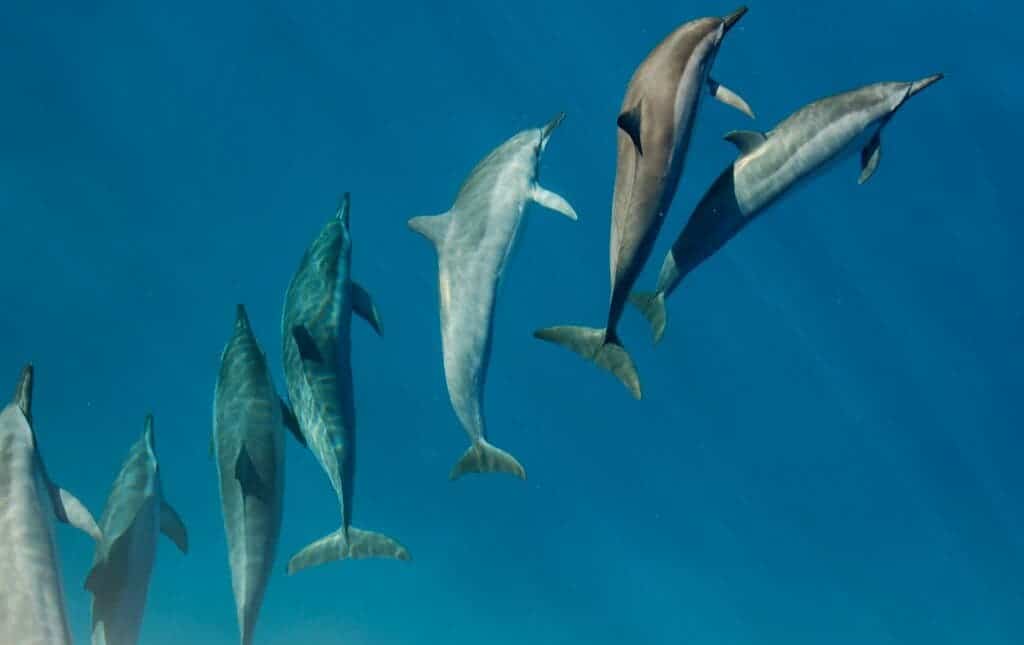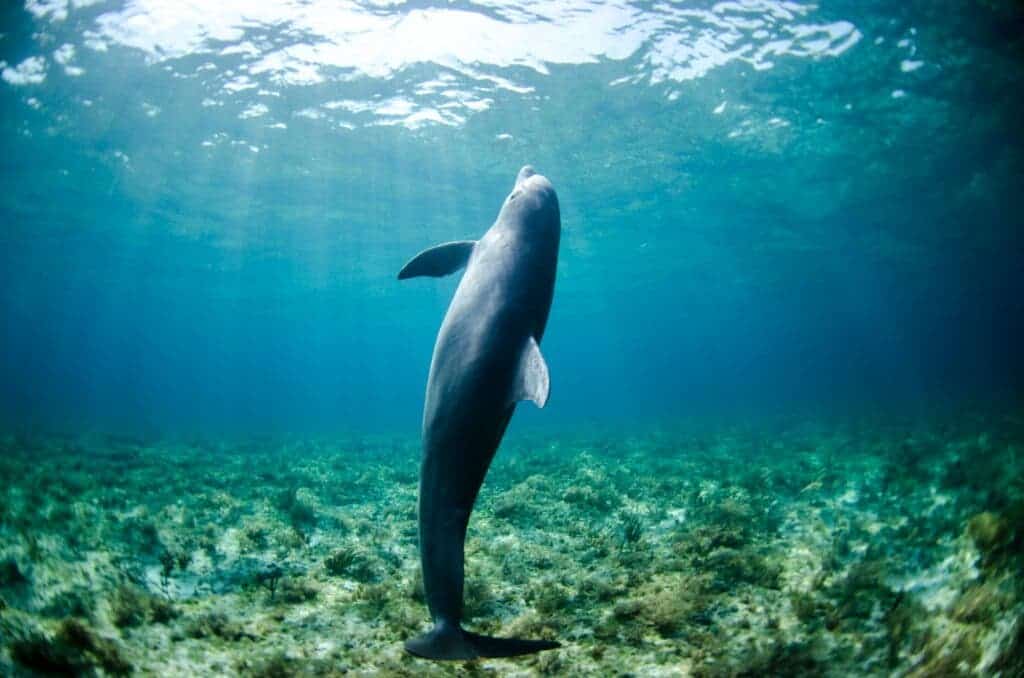When researchers observed dolphins line up behind each other underwater and rub their different body parts against corals, they could hardly believe it. This highly unusual dolphin behavior is discussed in a study and according to the authors of the study, this is a way of self-medicating — basically, dolphins rub their bodies against corals and sponges to medicate their skin.

Thirteen years ago, a scientist named Angela Ziltener and her team were studying bottlenose dolphins dwelling in the Northern Red Sea region when they noticed those creatures rubbing their skin against corals. This type of behavior hadn’t been recorded before, and Ziltener also discovered that the dolphins were very selective about the type of coral they treated their skin with.
This behavior seemed to be methodical and there seemed to be a reason for it — but it wasn’t clear what this reason was. To investigate this unique animal behavior further, the researcher decided to collect more data about the interaction between dolphins and coral polyps. It took more than a decade to analyze and sum up their findings, but finally, they’re here.
The biology and chemistry behind this strange dolphin behavior
The researchers observed that dolphins scratched different sides of their bodies against different coral species and sponges. For instance, the dolphins rubbed most of their body parts (including the ventral, lateral, and dorsal sides) against Rumphella aggregata, a gorgonian coral. However, they seem to rub mostly their head region, ventral side, and fluke (tail fin) against toadstool leather coral (Sarcophyton sp.) and sea sponges belonging to the genus Ircinia.
Interestingly, every time the dolphins wanted to rub their skin on gorgonian coral, they went into groups, formed queues, and waited for their turn but leather coral rubbing was observed mostly alone. Also, the rubbing behavior was observed in the case of juvenile and adult bottlenose dolphins, calves of the dolphins aging less than a year only watched the elders and didn’t seem to participate in group rubbing.
Lead author and food scientist Gertrud Morlock examined the coral and sponge samples that dolphins used to medicate their skin. In his analysis, he revealed that the sample consisted of 17 active metabolites featuring hormonal, antibacterial, toxic, and antioxidative properties.
When dolphins rub their skin against the coral, the polyps of the corals release mucus comprising the metabolites. These metabolites then come into contact with dolphin skin and provide them relief. Explaining this interaction further, Ziltener and Morlock told ZME Science:
“Leather corals and sponges are more compact and harder in their texture than the soft gorgonian coral branches, so the dolphins push one particular body part strongly into the selected substrate. Repeated rubbing allows the bioactive metabolites to come into direct contact with the skin of the dolphins, which in turn could help them support their skin homeostasis and be useful for prophylaxis or auxiliary treatment against microbial infections.”
The researchers also highlight that bottlenose dolphins need not have a particular skin condition to show this behavior but they even sometimes wake up in between their naps to scratch their body. When asked about the importance of this rubbing habit for the dolphins, the researchers further added:
“Our hypothesis appears plausible that dolphins utilize these bioactive secondary metabolites against dermal irritations or pathogens in the sense of preventative or curative means. The linking of the observation with the effective detection is new. Although similar gorgonian coral species are known to produce antimicrobial as well as cytotoxic secondary metabolites and leather coral species are reported to contain bioactive metabolites, the findings were not connected with the corals and sponges that the dolphins selectively accessed.”
Coral reefs are bedrooms for the dolphins
However, these coral clinics are in big trouble. A shocking report found that our planet has already lost 50% of its total coral reefs in the last 70 years. Moreover, due to increasing carbon emissions and climate change driving actions, coral bleaching events are on a rise.
Coral reefs are essential for the survival of thousands of underwater species including dolphins and coral polyps. As this study demonstrates, we’re still uncovering the many ways in which coral reefs support marine ecosystems. However, Ziltener and her emphasize that although corals are so important for our planet’s biodiversity, we are not acting responsibly to protect them.

Zeiltener also raises concerns about the way people who participate in dolphin tourism-related activities treat these animals. She has established a nonprofit named Dolphin Watch Alliance that promotes dolphin focused research and conservation efforts.
“The tourism industry makes a lot of money now out of dolphin swimming. People are dreaming of swimming with the dolphins, so they are figuring out which reefs they use and disturbing the dolphins if they don’t follow the guidelines for how to approach them in a responsible way,” the researcher notes.
Zeiltener and Morlock believe that coral reefs hold significance not only because they are home to many marine species but also because these habitats allow us to better understand the relationship between invertebrate and vertebrate species. Scientists can come up with more effective conservation strategies by studying these interactions.


